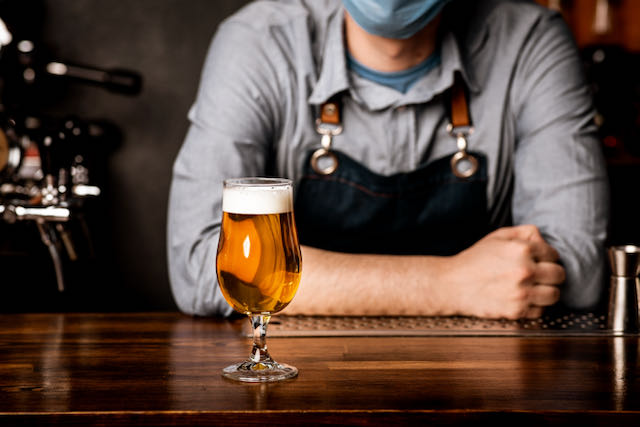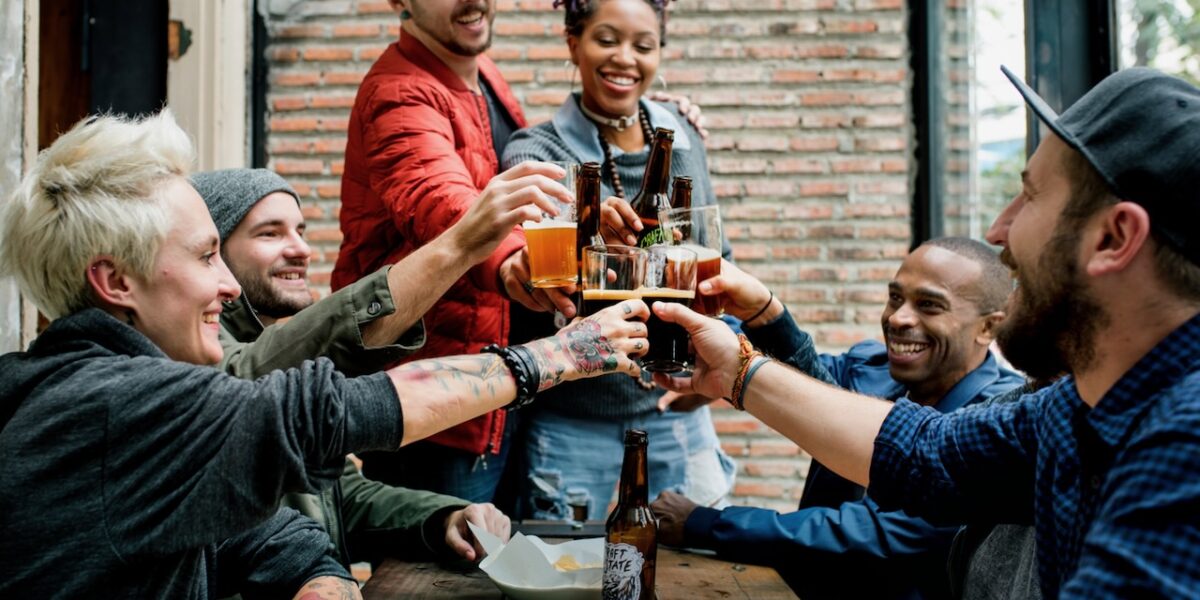By Jon Reynolds
Craft brewers and beverage producers need to be on top of the digital platforms as they emerge and evolve from the Coronavirus Pandemic. Read the first eight in our Top 16 Tips for e-commerce evolution.
Top 16 Tips for Craft Brewers, Wineries and Distilleries to build their online marketing efforts, that drive delivery and curbside sales continued…
9. Stay Connected with “Integrate Live Chat”
62% of customers are inclined to purchase products online if live customer support is available. (source: BoxFox). Live chat also reduces the abandoned cart orders. You can easily integrate chats like Olark or BoxFox in your website or you can also use Facebook’s messenger box.
 10. Generate “Social Proof”
10. Generate “Social Proof”
According to Salesforce, 54% of consumers trust information from online reviews and recommendations from their peers. When people see other people drinking your Manhattan, merlot or your seasonal ale, they become more confident in their choice.
11. Activate Instagram Selling
84% of consumers will buy from a brand they follow on social media over a competitor. Now what if you directly sell on social? Activate your Instagram selling account and with likes and engagement, you will also see an increase in online sales. To increase curbside pick-up sales too, Instagram selling can be a great medium for your brand.
12. Use Facebook Store
As of April 2020, Facebook still ranks #1 in the most popular social networks worldwide list. With Facebook’s global 2498 million active users, set up a Facebook store. Use Facebook store as your first touch and then use Facebook ads to convert sales. Start posting more videos as Facebook analytics has been seen to promote videos more than any other type of content. Reach out to local influencers that have a good following on Facebook.
13. Boost pickups during the holiday periods
In 2020, E-commerce sales hit a record high this year with more people doing their holiday shopping online, according to Mastercard. And in 2021, this number is only going to increase! Create a landing page of special holiday offers. Use Facebook ads and bundle products during the holidays targeted to your neighborhood for more curbside pick-up sales.
14. Offer Loyalty Programs & Club Memberships
DTC sales have been steadily increasing over the past year and club memberships have been a big reason why. With many states and countries opening up the industry by allowing direct sales from producers, execs are looking to find ways to make their clubs more attractive and increase online sales.
 15. Influencer outreach / Brand Ambassador
15. Influencer outreach / Brand Ambassador
89% of brands say ROI from influencer marketing is comparable to or better than other marketing channels. (source: bigcommerce) In the typical influencer marketing strategy, a brand reaches out to social media influencers with thousands – if not tens of thousands – of followers on platforms such as Instagram or Twitter, asking them if they would like to become a brand ambassador for their wine, beers or spirits.
16. Rethink your payment options
What most people want is a smooth buying process and if that is delayed, the customer may not be motivated to complete the transaction and then end up not buying your wines, spirits or beers. 46% of US Smartphone Market Share is captured by Apple Pay. With credit cards, Squarespace and Shopify, you can streamline your brewery’s payment processing, integrate shipping and allows the brewery to categorize products by type as different pages. Shopify also makes it easy to integrate into a Taproom POS system like Revel Systems or Toast.
Another important trend for Craft Brewers is to set up state-by-state expansion through an online service. First, you need to ensure your state allows out-of-state beer shipments from a licensed retailer. Then, your brewery can work with this licensed retailer in your state to ship to consumers out-of-state. In their March 22, 2021 Press Release, Weathered Souls in San Antonio, TX, struck a deal with Tavour, the online craft beer retailer, to expand their distribution from Texas only, to 25 more states! This is being done without any distributor being involved. Very unique and very effective because it is Direct to the Consumer’s door.
Say Goodbye to Local Beverage Stores?
With all of these digital options and online sales continue to grow, will local liquor, wine and spirit stores disappear? Not likely. Computers cannot replace a conversation with a retailer or a floor craft beer/wine expert who have tasted every craft beer or wine in their store, and remember what you purchased the last time you visited that store. Just think how many times you bought a craft beer or a wine that you never have tried, because you got a solid recommendation from an expert at the retail store that you frequent. The greater the selection, the greater the education and the greater personal contact from the store representative will make you come back again and again to buy innovative and eclectic craft beers, small lot production wines, and small batch distilled spirits.
From a legal perspective, all craft brewers need to better understand the laws of any state that you plan to sell to. By using a “Third Party Provider” (TPP), brewers are going through the proper legal steps because the TPP works with a licensed retailer to handle the monetary collection and pay the taxes. A great summary of the legalities of DTC Shipping was just compiled by Marc Sorini, General Counsel for the Brewers Association. You can find more information at this link: A Legal Primer on Direct-to-Consumer Beer Sales | Brewers Association. Craft brewers can partner with a neighboring retailer and grow their brand with e-Commerce and Direct to Consumer sales.

Jon Reynolds is the founder of Brewplan, a strategic marketing advisor to craft brewers, craft distilleries, boutique wineries, and a Certified Instructor in the UVM Business of Craft Beer Professional Certificate Program. He writes about business trends, beer consumers, distributor issues, legislation that affects craft brewers, marketing tools, and strategic planning to improve brewery profits.
Views and opinions expressed herein are those of the author who has spent more than 40+ years in the beer, wine and spirits industry and are provided for informational purposes only. The information set forth reflects the author’s opinion of current trends in the industry and should be researched further to make your own business conclusions.




